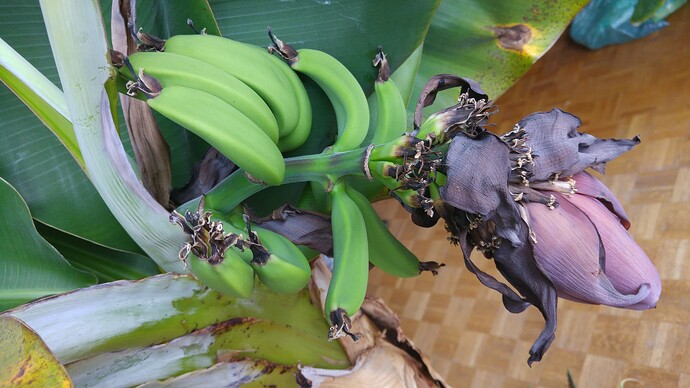Of course, no problem at all:
Due to the lighting, it has a rather orange tint. However, this plant is still struggling, or rather, it’s still in a rather poor condition, and I’ll likely have to propagate it. The Thai Constellation from the first series, before tissue culture, has a lot of issues with the root rot gene and is incredibly difficult to grow. At one moment, it’s a beautiful plant, and then, within just a few weeks, it completely declines.
@letsdothis no problem at all!
Over the years of posting online, I’ve grown accustomed to the fact that you can never be 100% sure what’s true and what isn’t. I completely understand when someone puts in a lot of effort and still doesn’t succeed, and then doubts arise when they see something that contradicts their experience. I’m always happy to explain what I do differently, especially since I don’t follow the norms that dominate the plant community. I’m constantly experimenting, and believe me, sometimes the results are disastrous, even embarrassing.
For example, it’s well-known that monsteras love light, but wherever you look, you’ll be warned that direct sunlight will kill or burn them. From firsthand experience, I can tell you that’s not true. Of course, if you bring it up from a basement and place it directly in the sun, it won’t fare well. I moved mine from artificial lights to a huge west-facing window as early as February, where it gets direct sunlight from noon until sunset. It’s thriving like crazy. However, it needs acclimatization, strict watering (my weak point), and fertilizing. And, of course, a moss pole is a must—without support, it will never grow as large. But this also depends on individual preferences. Many people don’t want such a beast in their homes—it’s hard to manage, takes up a lot of space, and for those who prefer smaller plants, monsteras can still thrive beautifully in low-light conditions. I have quite a few of those as well.
@Tavares105244 You’ve got a proper indoor orchard going on! 
@420buddy now cmon!! Those greenhouse setups of yours are massive! Mine is like a doghouse compared to yours, lol!
My garden is also very small, consisting of eight raised beds measuring 1.2 meters by 2 meters each. So, less than 20 square meters of planting space, with an additional 10 square meters of border area. It’s not much, but it yields a lot, mainly due to mixed planting and no-till gardening based on my own compost. And, of course, choosing crops based on the principle of “grow what you actually eat/use.”
It’s an interesting story about why I even started creating my own garden. I’ve had my hands in the soil for most of my life—growing up as a foster child on a large farm and later through my mother-in-law’s fairly large garden. When we built our house, having my own garden was always in the back of my mind, but it took a while before I actually made it happen. It probably would have taken even longer if I hadn’t once made a bet with my neighbors about who could grow the prettier tomatoes.
Tomatoes and some other vegetables have a bit of a troublesome history for me. Every time I ate them in any form—salad, sauce, puree, anything—I would have severe stomach issues. It got so bad that for 25 years, I didn’t eat anything that contained tomatoes. You can imagine that I entered this competition just for fun, out of a competitive spirit. There was no garden at the time, so I grew them in containers. And they turned out divine. I kept looking at those beautiful red fruits, my family devoured them, and eventually, I couldn’t resist. I ate a whole bowl of them, straight from the plant. And the next day—get this—it dawned on me that I had absolutely no issues. None. Zero. Nada. Niente. That’s when it all became clear to me. I immediately scheduled an appointment with my doctor for testing—pesticide and fungicide allergies.
As an interesting side note, the same thing happened with onions, strawberries, and more. After that experience, I started looking more closely at the fruits and vegetables we buy. The findings were shocking. Strawberries are sprayed 11 to 16 times before they hit the shelves. The same goes for tomatoes, potatoes, peppers—you name it. Naturally, the decision was made: we immediately set up a garden, and I converted one of the rooms in the house into a tent setup where I grow tomatoes throughout the winter. January harvest:
Now I’m making up for those 25 lost years by indulging in tomatoes like there’s no tomorrow 
It’s no wonder that one falls into this with all their heart, right?
![]()
![]()















